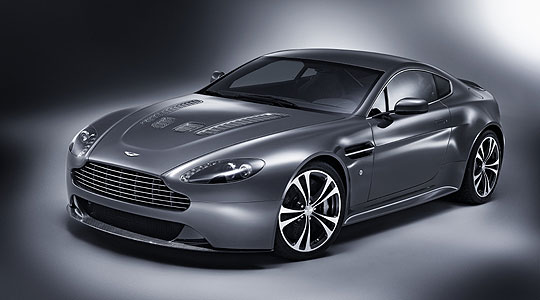
The 12-cylinder, two-seater Aston Martin will be launched on March 3rd at this year’s Geneva Salon.
It will be called simply ‘V12 Vantage’ and not ‘V12 Vantage RS’, as was the concept car unveiled at the company’s new Design Studio launch party in 2007. So, the ‘RS’ suffix has been dropped as have several, more drastic aspects of the prototype: it will have 510bhp rather than 600bhp, weigh in at 1680kg rather than the anticipated "less than 1600kg", and the adjustable rear spoiler has been replaced by a more extreme, static version of the ‘flip tail’.
Those expecting a track-day machine, with the engine from one of the highly successful DBR9 or DBRS9 racers, may be a little disappointed. But Aston Martin has sensibly addressed genuine, potential purchasers - rather than bar-room pundits - with the new car. Looking on the positive side, too, it’s nice to note that the company is quoting a price of "£140,000 approx." - that’s a lot more affordable than the elevated conjecture 13 months ago of it being the "most expensive car in its range".
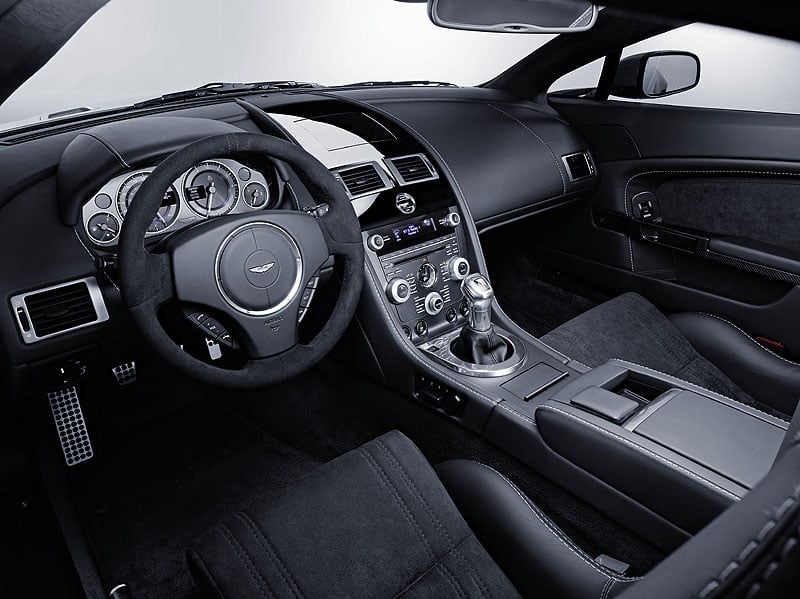
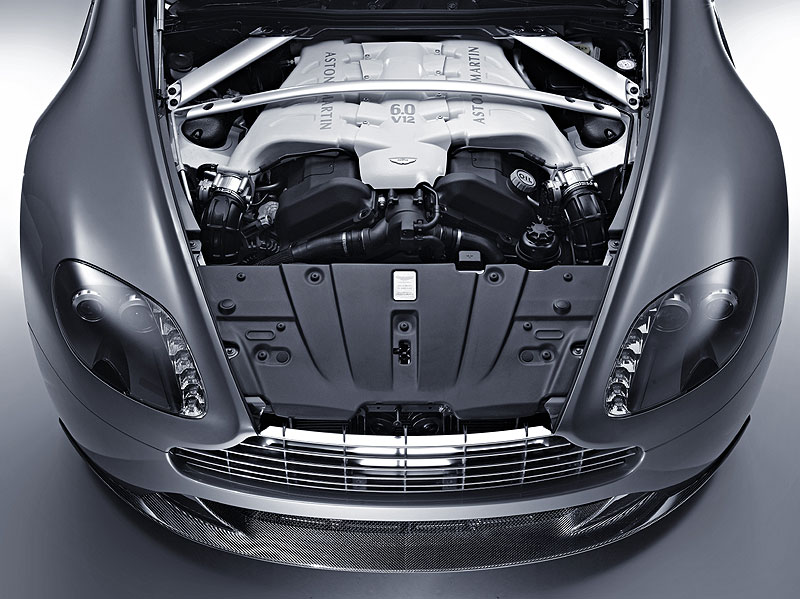
Around a circuit, the V12 Vantage’s performance should put it comfortably ahead of any other car in the Gaydon manufacturer’s range, mixing, as it does, the uprated DBS-level 6.0-litre V12 with the compact dimensions of the V8 Vantage. It’s practical, too, as owners of the smaller car will attest. The hatchback will swallow up 300 litres of luggage - more than enough for a long weekend away.
And Aston has not forgotten the core values of the marque by giving the V12 Vantage a higher rear-axle ratio (3.71:1, from 3.909:1) that will ensure the big, torquey V12 will give relaxed, very high-speed cruising on de-restricted roads.
Just one transmission will be available: the six-speed, manual transaxle as used in the manual DB9 and V8 Vantage.
Visually, many of the concept’s key styling cues have been retained. À la DBRS9, the V12 Vantage has a generously louvred bonnet and it utilises N24-type (the ‘production racer’ V8 Vantage) side sills to duct air away from the underside. The louvres serve to cool engine temperatures, as well as providing the useful aerodynamic aid of reducing air pressure under the bonnet. It only looks wider - mainly as a result of the aerodynamic addenda and lowered (by 15mm) ride.
A splitter at the front and a diffuser (made of carbonfibre, also guiding air to a new, high-capacity oil cooler) at the back act in unison to anchor the car firmly to the ground at high speeds.
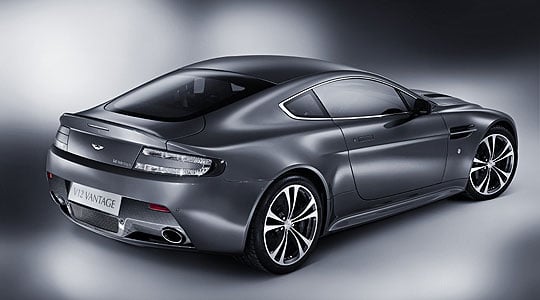
CCM (Carbon Composite Matrix) brakes come as standard. Already seen in the DBS - and highly rated when we drove the launch cars in 2007 - the 398mm front/360mm rear discs should give phenomenal stopping performance: well up to the prodigious speeds the car is capable of. Handling has been comprehensively worked over, with stiffer springs (by 45%), and front (by 15%) and rear (by 75%) anti-roll bars.
Diamond-turned 19in, forged 10-spoke alloy wheels are shod with Pirelli P Zero Corsa tyres, specifically designed for the V12 Vantage. The factory is confident that the suspension, wheels and tyres of the new car will endow the V12 Vantage with "the highest cornering forces of any Aston Martin; up to a peak of 1.3g".
Inside the cockpit, drivers will find a unique-to-the-V12 Vantage ‘Sport’ button which allows the driver to choose between two powertrain modes: default provides a smoother response for everyday conditions and poor weather, while ‘Sport’ will give much sharper throttle-mapping for ultimate performance. In Sport, the exhaust adopts a more strident - sporty, I suppose - note, too.
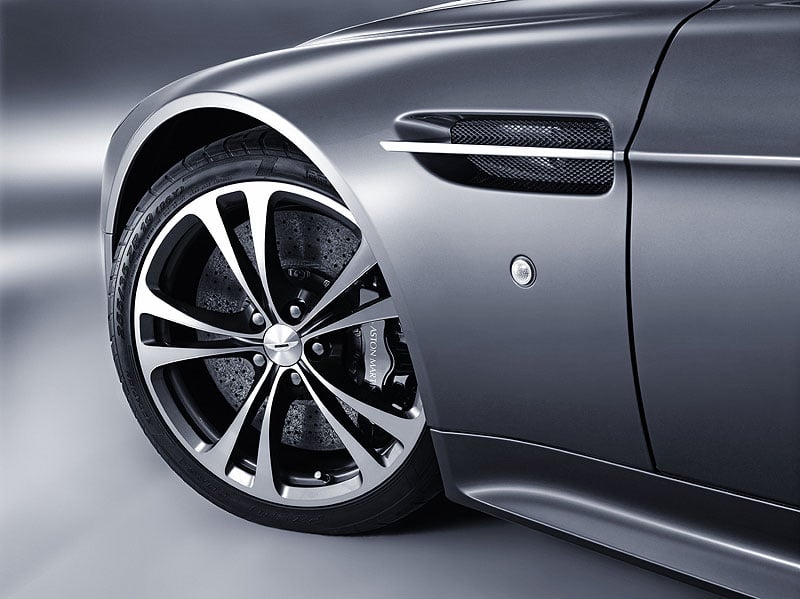
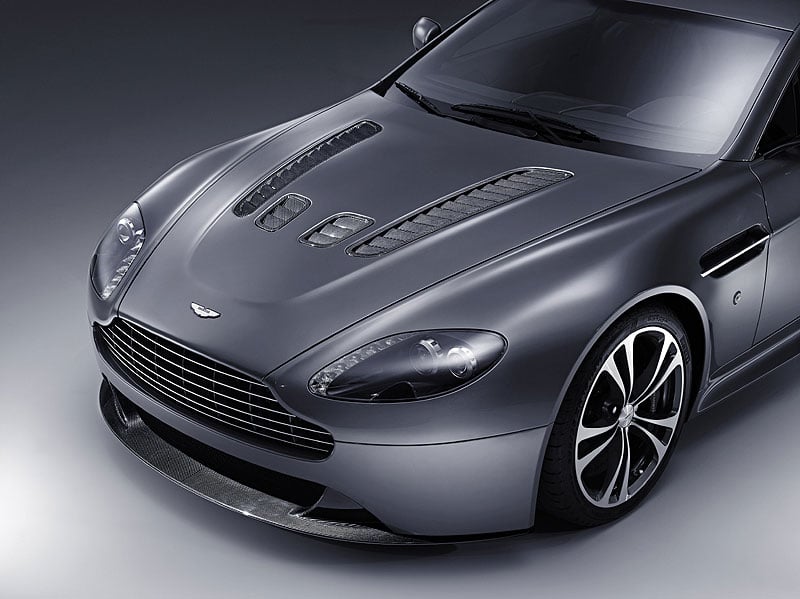
There’s also a choice of three modes of operation in a revised Dynamic Stability Control (DSC) system. On start-up and as a default, the system is on. Holding the DSC button down for two seconds selects ‘track mode’, which raises the manner and threshold at which the system intervenes. A full, four-second depress switches the system off altogether.
That will be one for the TV presenters, then.
The interior is much as the 2007 concept. Alcantara (lighter, and more expensive than many leathers) is used extensively throughout the cabin, while the familiar 2009-spec, Aston Martin family dials and controls are installed - although the instrument cluster has been revised (yet again) with even more legible dials. There’s plenty of carbonfibre on view, with nice touches such as door pulls made in the super-strong, lightweight material.
Carbonfibre and Kevlar® composite seats are an option. Supplied by a major manufacturer of motorsport equipment, the seats - hand-trimmed at Gaydon - save a further 17kg per car.
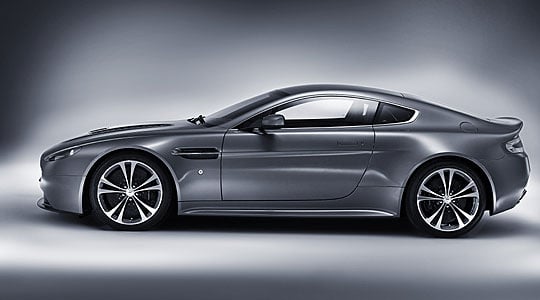
Deliveries of the V12 Vantage are likely to commence later this year and Aston Martin is to restrict production to "up to 1000 examples over the life span of the car".
Commenting proudly on the new car, Aston Martin Chief Executive Officer, Dr Ulrich Bez said: "This is the ultimate performance interpretation of the Vantage range, combining our most agile model with our most powerful engine.
"It represents the definitive driving package; providing spectacular performance to ensure a dynamically thrilling and everyday useable driving experience."
The Classic Driver view? Having driven all the current models, we're looking forward to getting behind the wheel. Both DBS and DB9 Sports Pack manual cars are superb drivers’ machines. Put that sort of powertrain in the smaller, more nimble Vantage chassis and it’s going to impress - trust me.
Aston Martin V12 Vantage: Specification
Body:
Two-door, two-seat coupe
Engine:
All-alloy quad overhead cam 48-valve 5935cc V12
Compression ratio 10.9:1
Front mid-mounted engine, rear-wheel drive
Fully catalysed stainless steel exhaust system with active bypass valves
Maximum Power
510bhp (380kW / 517PS) at 6500rpm
Maximum Torque
570Nm (420lb ft) at 5750rpm
Acceleration
0-62mph (100km/h) in 4.2 seconds
0-60mph in 4.1 seconds
Maximum Speed
190mph (305km/h)
Fuel Economy
Urban 11.64mpg / 24.26 l/100km
Extra Urban 24.05mpg / 11.74 l/100km
Combined 17.28mpg / 16.35 l/100km
CO2 388g/km
Transmission:
Rear mid-mounted six-speed manual gearbox. Alloy torque tube with carbonfibre propeller shaft
Limited-slip differential
Final Drive Ratio 3.71:1
Steering:
Rack and pinion
Suspension:
Front: Independent double wishbone incorporating anti-dive geometry, coil springs, anti-roll bar and monotube dampers
Rear: Independent double wishbones with anti-squat and anti-lift geometry, dual-rate coil springs, anti-roll bar and monotube dampers
Wheels:
Front: 9in x 19in
Rear: 11in x 19in
Tyres:
Front: Pirelli P Zero Corsa 255/35 ZR19
Rear: Pirelli P Zero Corsa 295/30 ZR19
Brakes:
Front: Ventilated Carbon Ceramic discs 398mm diameter with six-piston calipers
Rear: Ventilated Carbon Ceramic discs 360mm diameter with four-piston calipers
Dynamic Stability Control (DSC) with Track mode
Anti-lock braking system (ABS)
Electronic Brakeforce Distribution (EBD)
Emergency Brake Assist (EBA)
Traction Control
Length: 4380mm (172.5in)
Width: 1865mm (73.5in) (excluding door mirrors)
2025mm (80in) (including door mirrors)
Height: 1241mm (49in)
Wheelbase: 2600mm (107.9in)
Fuel tank capacity: 80 litres (17.6 Imp. Gal. / 21.1 US Gal)
Weight: 1680kg (3704lb)
Text: Steve Wakefield
Photo: Aston Martin - Strictly Copyright
ClassicInside - The Classic Driver Newsletter
Free Subscription!







